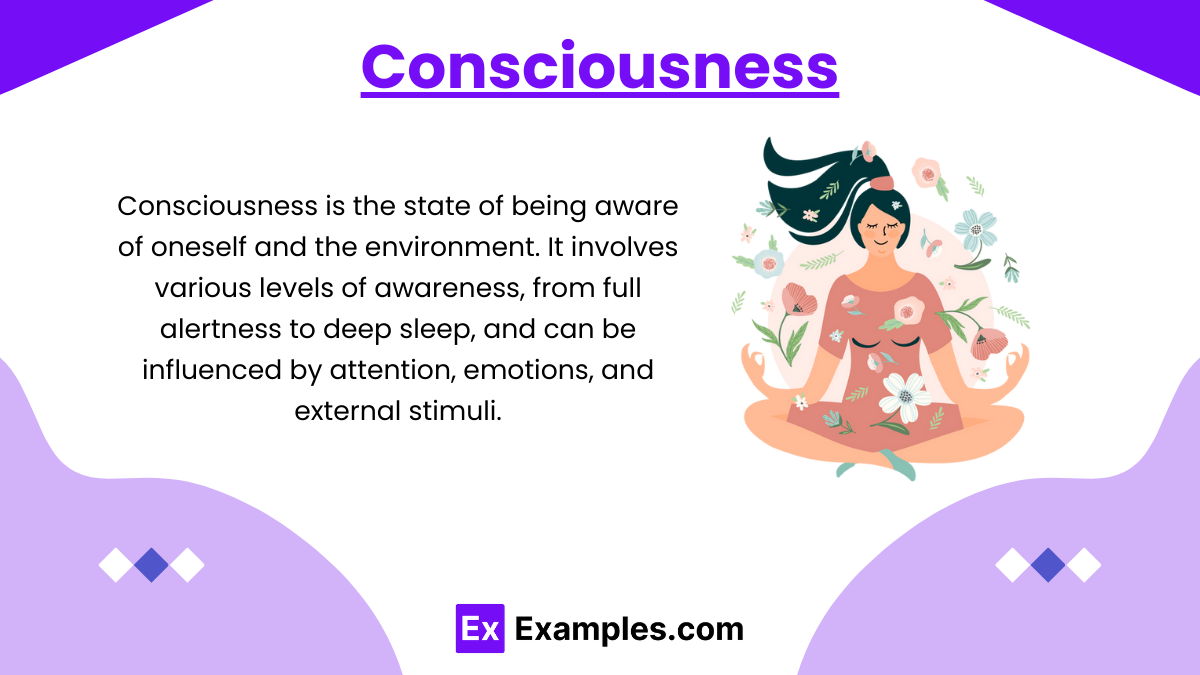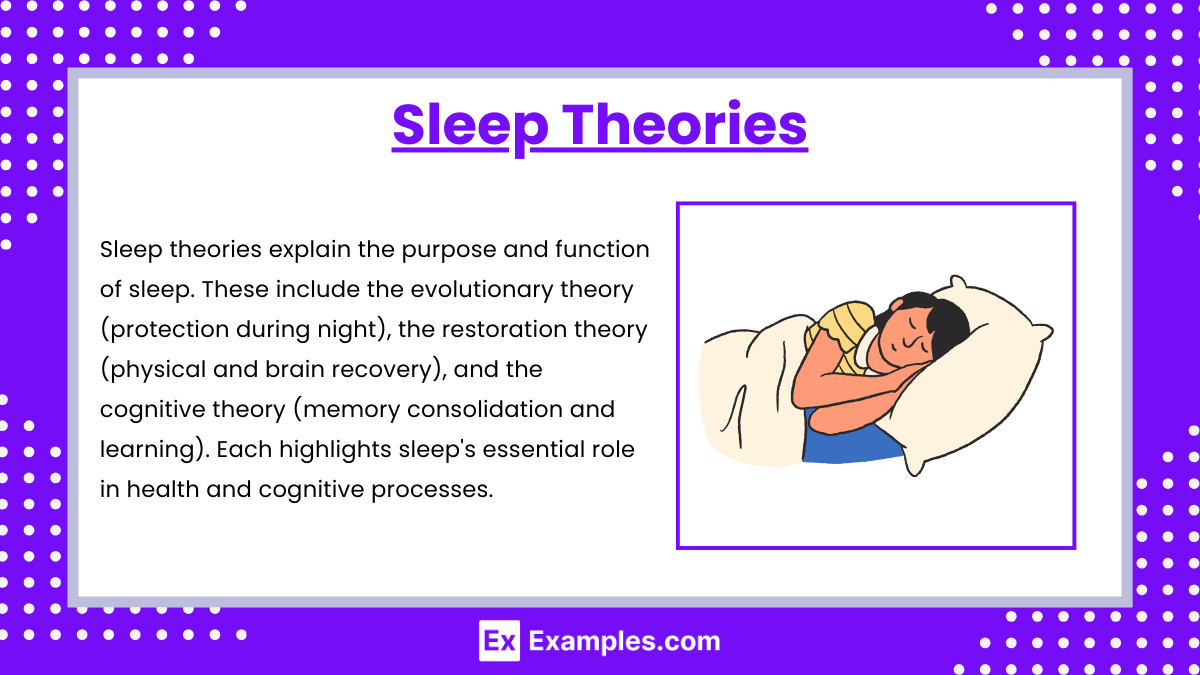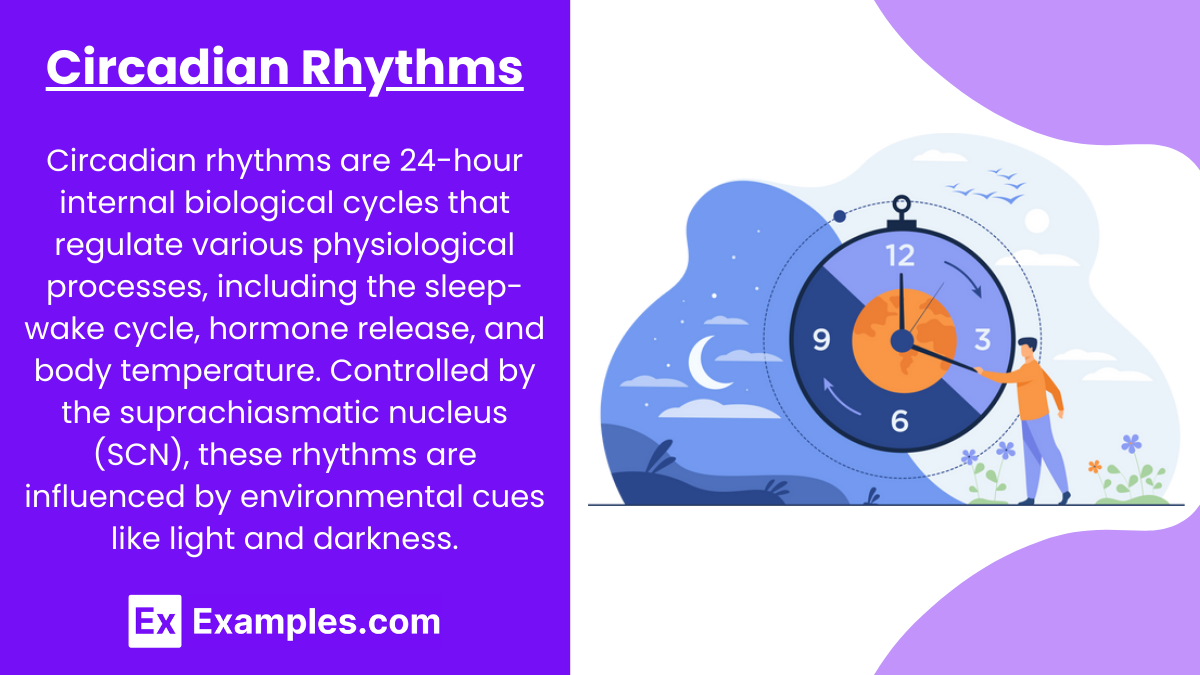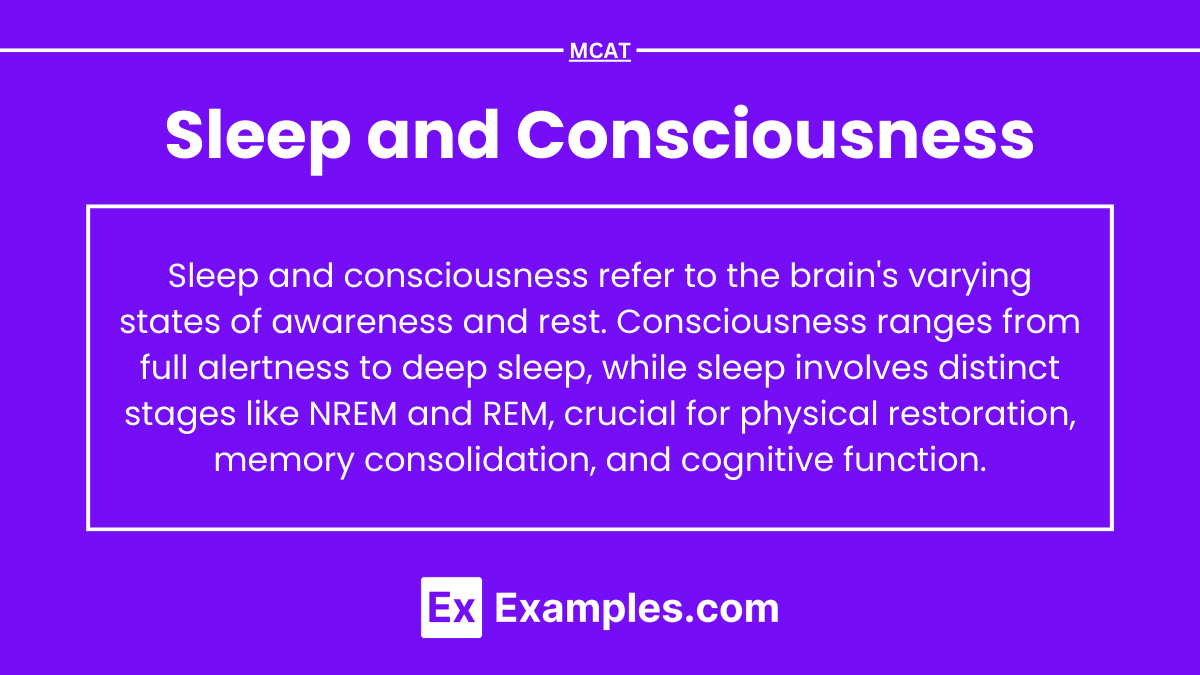Preparing for the MCAT necessitates a profound comprehension of sleep and consciousness, essential for mastering Organ Systems. Understanding the mechanisms of sleep cycles and states of consciousness, as well as brain wave functions, equips you with crucial insights into cognitive processes, vital for excelling on the MCAT and understanding complex neural functions.
Learning Objective
In studying "Sleep and Consciousness" for the MCAT, you should develop an understanding of the different states of consciousness, including alertness, drowsiness, and various stages of sleep such as NREM and REM sleep. Explore the physiological roles of brain waves, the sleep cycle, and circadian rhythms in regulating sleep patterns and overall cognitive function. Evaluate how disruptions in sleep and consciousness, such as sleep disorders, affect cognition, behavior, and health. Additionally, understand how these processes are foundational to memory consolidation, learning, and emotional regulation. Apply this knowledge to interpreting data from sleep studies and solving MCAT practice questions on neurophysiological processes and the impact of sleep on the body and brain.
I. Consciousness

Consciousness refers to our awareness of ourselves and our environment. It fluctuates throughout the day, and various states can influence cognitive performance and behavior.
A. Levels of Consciousness
Alertness:
Definition: The state of being awake and aware of both internal and external stimuli.
Physiology: Associated with activity in the prefrontal cortex. The reticular formation in the brainstem plays a key role in maintaining alertness by sending signals to the cortex.
Example: Solving complex math problems while fully aware of surroundings.
Daydreaming:
Definition: A relaxed state of consciousness, often involving mind-wandering.
Physiology: Lowered activity in the prefrontal cortex.
Example: Thinking about vacation plans while sitting in a lecture.
Drowsiness:
Definition: The state between wakefulness and sleep. You are still semi-conscious, but attention is reduced.
Example: Nodding off while reading or listening to a boring lecture.
Sleep:
Definition: A naturally recurring state of rest characterized by reduced consciousness and altered sensory activity.
Physiology: Decreased activity in the cerebral cortex.
Altered States of Consciousness:
Definition: These can be induced by drugs, hypnosis, or meditation.
Examples: Euphoria from drugs, hypnotic trance, or a deep meditative state.
B. Measuring Brain Activity (Electroencephalography - EEG)
EEG is used to measure brain wave patterns associated with different states of consciousness.
Beta Waves (12–30 Hz):
Seen in alertness and concentration.
High-frequency waves, associated with cognitive tasks.
Alpha Waves (8–13 Hz):
Associated with a relaxed but awake state (e.g., daydreaming).
Theta Waves (4–7 Hz):
Seen in light sleep or very deep relaxation, like during hypnosis or deep meditation.
Delta Waves (0.5–3 Hz):
Present during deep sleep (Stages 3 and 4 of NREM sleep).
II. Sleep

Sleep is essential for cognitive function, memory consolidation, and overall health. It consists of multiple cycles that repeat throughout the night.
A. Stages of Sleep
Sleep is divided into two main types: non-rapid eye movement (NREM) and rapid eye movement (REM) sleep.
1. NREM Sleep
Stage 1 (Light Sleep):
Theta waves appear. This stage is the transition between wakefulness and sleep. You experience hypnic jerks or sensations of falling.
Stage 2 (Deeper Sleep):
Theta waves continue, interspersed with sleep spindles (bursts of rapid brain activity) and K-complexes (large, slow waves).
This stage is important for memory consolidation.
Stages 3 and 4 (Deep Sleep):
Known as slow-wave sleep (SWS), dominated by delta waves.
Important for physical restoration and healing.
Hard to wake someone from these stages.
2. REM Sleep
Rapid Eye Movement Sleep (REM):
Brain waves resemble wakefulness (beta waves), but the body is paralyzed except for eye movement.
Most vivid dreams occur during this stage.
Important for memory consolidation, particularly procedural and emotional memories.
B. Sleep Cycle
A sleep cycle lasts approximately 90 minutes and progresses through the NREM stages followed by REM sleep. A person experiences 4-5 sleep cycles per night.
Early in the night, NREM sleep (especially Stages 3 and 4) dominates.
Toward the end of the night, REM sleep becomes longer and more frequent.
C. Sleep Deprivation
Short-Term Effects: Reduced attention, cognitive function, and reaction time. Emotional regulation worsens.
Long-Term Effects: Increased risk for cardiovascular issues, weakened immune system, and mental health disorders like anxiety and depression.
REM Rebound: When deprived of REM sleep, people will spend more time in REM when they finally sleep.
III. Sleep Theories

Several theories explain why we sleep and the functions it serves.
A. Evolutionary Theory
Sleep evolved to keep humans safe during the night when it is dangerous to be active and vulnerable to predators.
B. Restoration Theory
Sleep allows the body to repair itself and restore depleted energy reserves.
REM sleep is crucial for brain recovery, while NREM sleep aids in muscle and tissue repair.
C. Cognitive Theory
Sleep is essential for memory consolidation, learning, and cognitive processing.
Synaptic pruning occurs during sleep, which strengthens important neural connections and eliminates unnecessary ones.
IV. Sleep Disorders

Sleep disorders can disrupt normal sleep patterns and have various physical and psychological consequences.
A. Insomnia
Definition: Difficulty falling or staying asleep.
Treatment: Cognitive behavioral therapy (CBT), lifestyle changes, and sometimes medications.
B. Sleep Apnea
Definition: Repeated episodes of stopping breathing during sleep, leading to disrupted sleep.
Types:
Obstructive Sleep Apnea: Caused by a physical blockage in the airway.
Central Sleep Apnea: Caused by the brain's failure to send signals to muscles that control breathing.
C. Narcolepsy
Definition: Sudden, uncontrollable sleep attacks, often accompanied by cataplexy (loss of muscle control).
Cause: Associated with dysregulation of REM sleep.
D. Parasomnias
Definition: Abnormal behaviors during sleep.
Examples:
Sleepwalking (Somnambulism): Occurs during NREM sleep.
Night Terrors: Also occur during NREM sleep, often involving intense fear, and are more common in children.
V. Circadian Rhythms

Circadian rhythms are 24-hour biological cycles that regulate sleep-wake patterns, hormone release, and other bodily functions.
A. Role of the Suprachiasmatic Nucleus (SCN)
The SCN in the hypothalamus controls circadian rhythms.
It receives light signals from the retina and adjusts melatonin production in the pineal gland, a hormone that promotes sleep.
B. Melatonin and Light Exposure
Melatonin secretion increases in the evening and decreases in the morning.
Blue light exposure from screens suppresses melatonin production, disrupting the sleep cycle.
C. Shift Work and Jet Lag
Shift work and jet lag disrupt normal circadian rhythms, leading to poor sleep quality and cognitive issues.
Strategies to minimize effects: Exposure to bright light during wake periods and darkness during sleep periods.
Examples
Example 1: Sleep Deprivation and Cognitive Performance
Prolonged sleep deprivation negatively impacts cognitive functions such as memory, attention, and decision-making. Sleep-deprived individuals may experience impaired reaction times and difficulty concentrating, similar to the effects of alcohol impairment.
Example 2: Sleep-Wake Cycle Regulation by Circadian Rhythms
The body's circadian rhythms, controlled by the suprachiasmatic nucleus (SCN) in the hypothalamus, regulate the sleep-wake cycle. Disruptions (e.g., from jet lag or shift work) can cause sleep disorders, difficulty concentrating, and mood disturbances.
Example 3: REM Sleep and Memory Consolidation
During REM sleep, vivid dreaming occurs, and procedural memories are consolidated. This is why REM sleep is critical for tasks requiring motor skills and emotional memory retention.
Example 4: Impact of Caffeine on Sleep
Caffeine blocks the effects of adenosine, a neurotransmitter that promotes sleep. This leads to increased alertness but can interfere with the ability to fall asleep, reducing the overall quality and duration of sleep.
Example 5: Narcolepsy and Cataplexy
Narcolepsy is a sleep disorder characterized by sudden sleep attacks and cataplexy, a sudden loss of muscle control triggered by strong emotions. This condition is linked to dysregulation of REM sleep, making it difficult for the affected individual to maintain normal wakefulness.
Practice Questions
Question 1:
Which brain region is primarily responsible for regulating circadian rhythms that influence sleep-wake cycles?
A) Cerebellum
B) Medulla Oblongata
C) Suprachiasmatic Nucleus (SCN)
D) Hippocampus
Answer: C) Suprachiasmatic Nucleus (SCN)
Explanation: The SCN in the hypothalamus receives input from light-sensitive retinal cells and helps regulate circadian rhythms that control sleep-wake cycles.
Question 2:
During which stage of sleep do delta waves dominate the EEG and the body enters a deep, restorative phase of sleep?
A) REM Sleep
B) Stage 1 NREM Sleep
C) Stage 2 NREM Sleep
D) Stage 3 and 4 NREM Sleep
Answer: D) Stage 3 and 4 NREM Sleep
Explanation: Stages 3 and 4 of NREM sleep are known as slow-wave sleep (SWS), characterized by delta waves. This stage is critical for physical restoration and tissue repair.
Question 3:
Which neurotransmitter is most closely associated with promoting sleep by accumulating in the brain throughout the day?
A) Dopamine
B) Serotonin
C) Adenosine
D) Acetylcholine
Answer: C) Adenosine
Explanation: Adenosine accumulates in the brain throughout the day, leading to increased sleep pressure. Caffeine works by blocking adenosine receptors, which promotes wakefulness.


